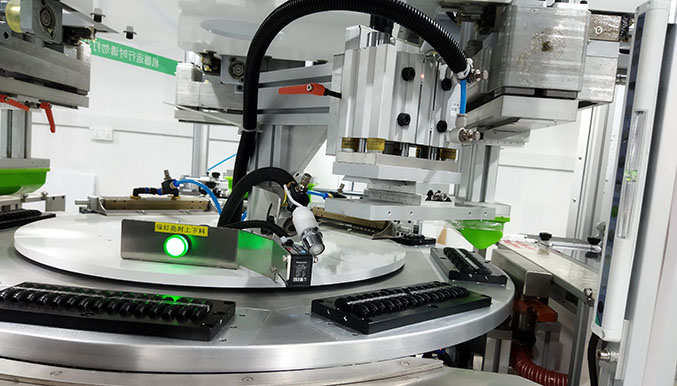
Screen blocking in screen printing is an aspect that can not be ignored. The reasons for sealing the screen plate in the printing process are various, and the main reasons are as follows: ① The particles in the printing ink are larger. ② Ink on the screen plate after drying conjunctiva. ③ The viscosity of the ink is too high to affect the printing ④ low temperature ink fluidity.
The above four reasons can lead to the phenomenon of blocking the screen after printing. Problems encountered in daily production should be analyzed in detail and the right way should be chosen to solve them. Now several solutions are introduced as follows, for use when choosing reference.
First of all, from the ink manufacturing and use methods to discuss the solution of screen printing machine after the blocking method. The blocking caused by the large particle of ink can be solved from the time of manufacturing ink. The main method is to strictly control the ink particle size should not be too large. From the perspective of modern ink manufacturing technology, it is not difficult to solve the problem of large ink particles.
In the printing process of the screen printing machine, the viscosity of the ink increases due to the volatilization of the solvent, and the instant drying is formed at the mesh to block the mesh (after drying the conjunctiva). Especially in the use of evaporation-drying ink this phenomenon is more prominent. Evaporative drying ink is dried by using solvents, so in the screen printing machine must choose the appropriate solvent control drying speed, in addition to pay attention to the production workshop ventilation and temperature, humidity conditions. In the selection of ink to consider the impact of climate, the general use of rapid drying oil ink in winter, the use of late drying oil ink in summer in the spring and autumn to use the drying degree between the two inks. Another point in fine line printing can use dry agent, if the use of dry agent also occurs blocking phenomenon, you must change to other types of ink. The use of oxidation drying ink, the phenomenon of blocking the net is not much, but in the summer if the excessive use of desiccant, will also occur, the general summer to control the use of desiccant.
When using two-liquid reactive ink, due to the slow drying speed of the ink itself, there is almost no blocking phenomenon, but occasionally there is a blocking phenomenon, the reason is that the viscosity of the ink after the evaporation of the solvent increases, resulting in the blocking of the net, in this case, you can add an appropriate amount of dry agent in the ink to dilute to prevent the blocking phenomenon.
In the printing process of the screen printing machine, the viscosity of the ink increases, and the main reason for the blocking is that the ink on the screen printing plate increases the viscosity of the ink due to the evaporation of the solvent, and the blocking phenomenon occurs. If the printing image area is relatively large, the ink consumption on the dead screen printing plate is more, and the screen blocking phenomenon is small. If the graphic area is small, the ink consumption on the screen plate is small, and the ink on the screen plate is long. With the ink repeatedly moving on the screen plate, the viscosity gradually increases, which is easy to cause the sealing of the screen. In this case, it is necessary to often change the new ink, which can prevent the phenomenon of blocking the net.
The poor fluidity of the ink will cause the ink to block when it does not pass through the screen. This situation can be solved by reducing ink viscosity and improving ink fluidity.
In addition, the mesh number and opening area of the selected screen are smaller than the particle size of the ink, so that the more granular ink is not easy to pass through the mesh and the phenomenon of blocking the net is one of the reasons.

